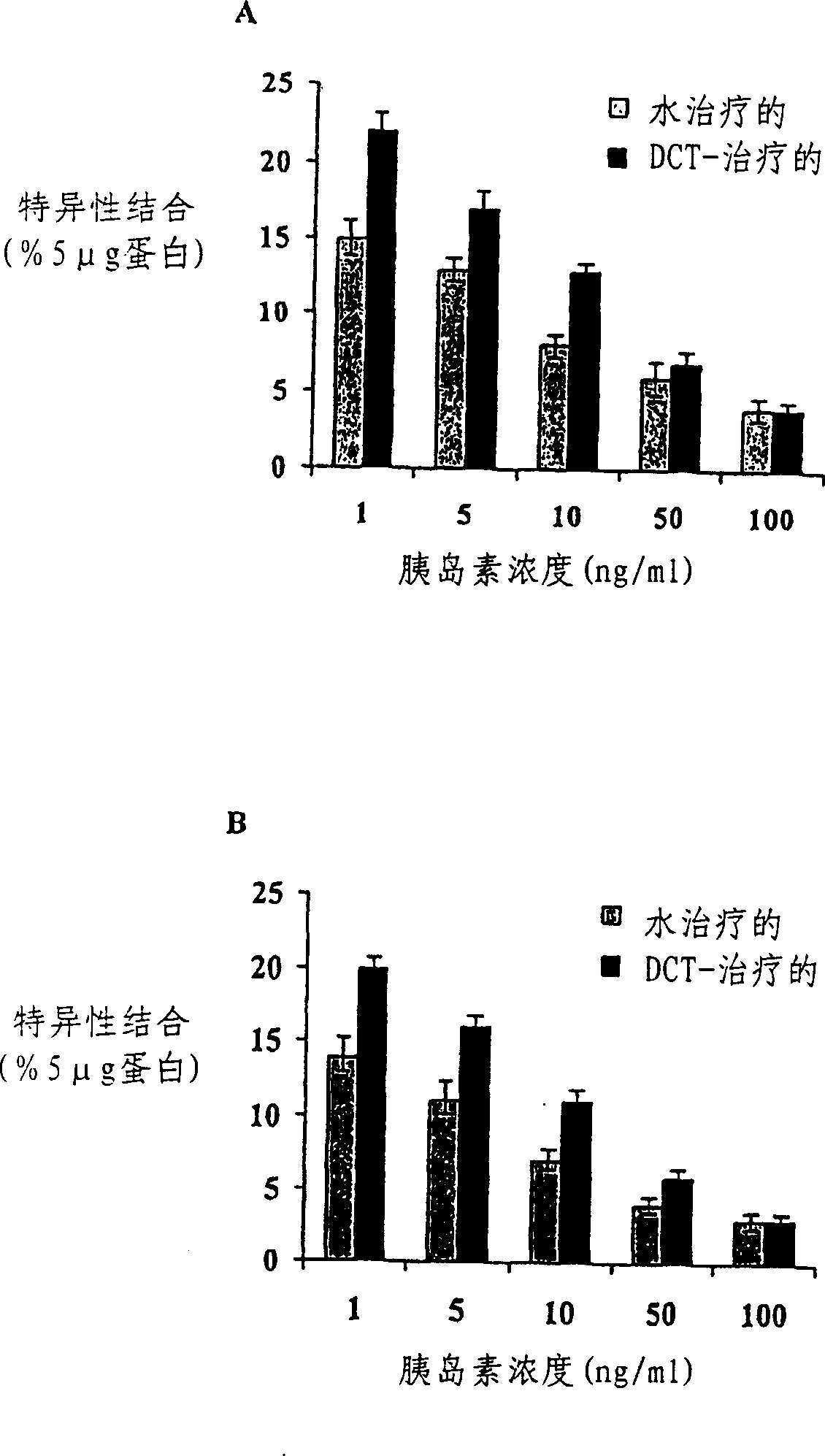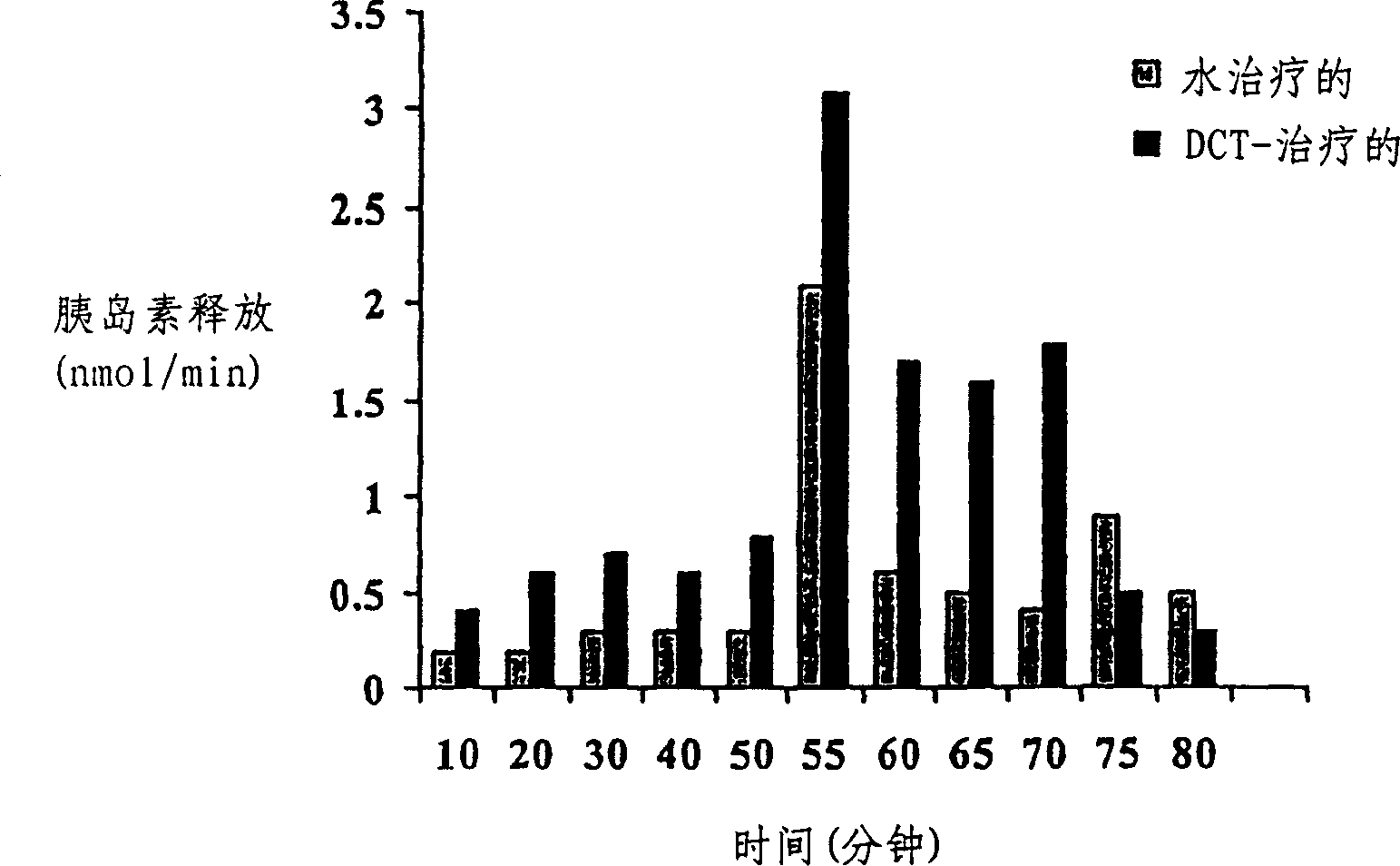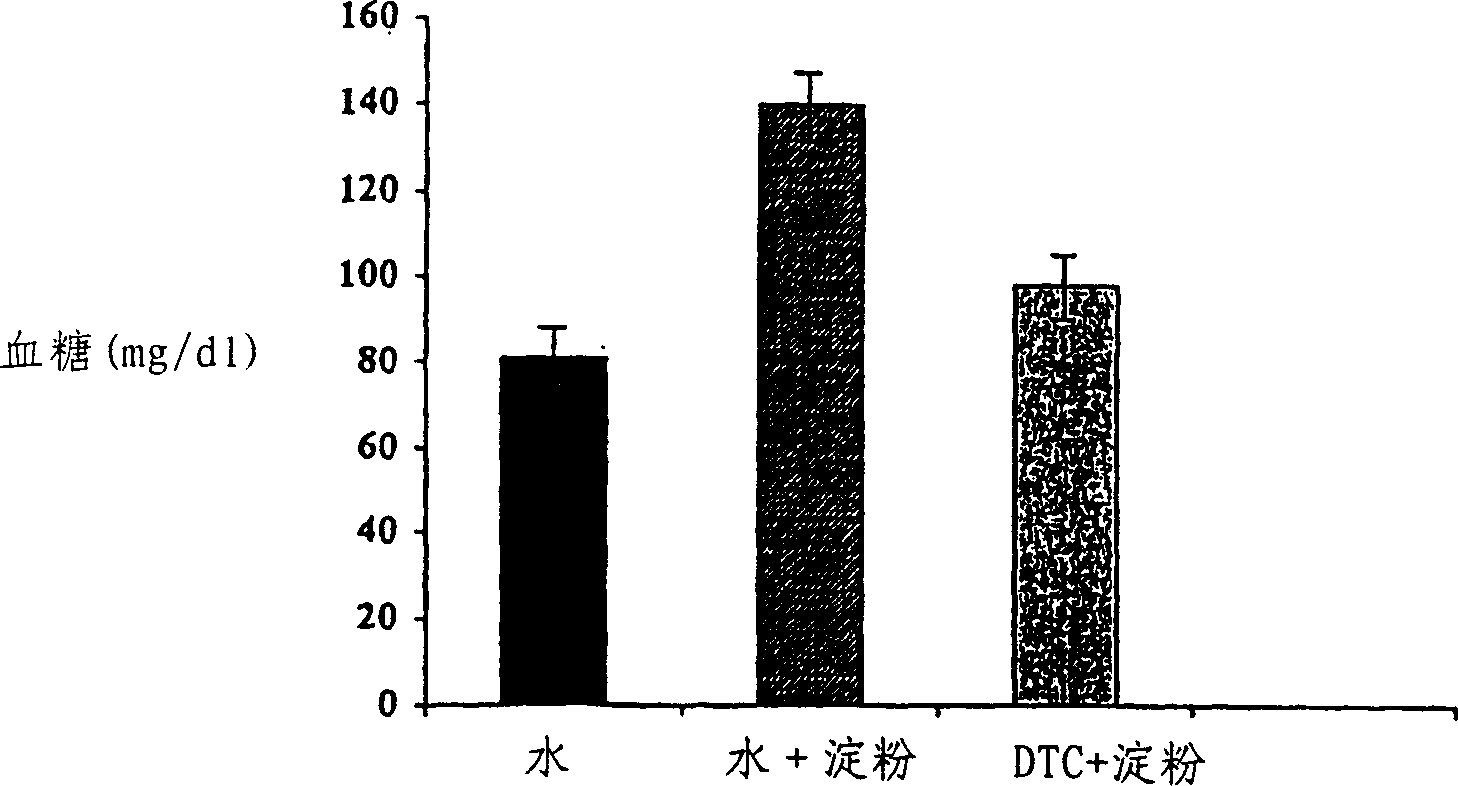Midicial herbal compound for prevention and treatment of diabetes
A composition and hypoglycemic technology, applied in the herbal composition for preventing or treating diabetes, in the field of preventing or treating diabetes, can solve problems such as rising cardiovascular mortality
- Summary
- Abstract
- Description
- Claims
- Application Information
AI Technical Summary
Problems solved by technology
Method used
Image
Examples
Embodiment 1
[0110] Example 1-Materials and Methods-Extraction of Medicinal Plants
[0111] Palm tree is grown in India; the inside of the trunk is collected and dried. Mulberry is grown in Korea and northern China; leaves and roots are collected and dried. Chicken feet ginseng is grown in Vietnam; the whole plant, including roots, branches and leaves, is collected and dried. Ophiopogon japonicus, double-petal rose (Rosa rugosa var typica (Regel)), 栝lou (Maxim) and Zhimu (Bunge) are planted in South Korea and northern China; the roots are collected and dried. Dayflower (L.) is grown in Korea and China; leaves, stems, and flowers are collected and dried. The dry ingredients are ground into powder and mixed (palmwood (about 20%), chicken feet ginseng (about 20%), mulberry (about 15%), Ophiopogon japonicus (about 10%), 栝lou (about 10%), Anemarrhena (about 10%), rose (about 8%) and dayflower (about 7%) w / w). Boil 40g of the combined plant powder and 200ml of water in a slow cooker until the volume...
Embodiment 2
[0112] Example 2-Goto-Kakizaki (GK) rats
[0113] GK rats (Goto Y et al., spontaneous diabetes produced by selective feeding of normal Wistar rats, Proc. Japan. Acad. 51: 80-85, 1975; Sugiyama Y et al., hypoglycemia in spontaneous diabetic GK rats The role of insulin sensitivity in the liver, J.Japan.Diab.Soc., 32:593-599, 1989) is one of the best animals to study NIDDM, because most of these animals develop diabetes at about 3 months of age, and diabetes Symptoms share many pathological features with human NIDDM. GK rats show impaired insulin secretion and peripheral insulin resistance. The insulin response, sensitivity of glycogen synthesis, adipogenesis and DNA synthesis in the liver cells of GK rats were significantly decreased compared with control rats without diabetes. In GK rats, the structure of the islets is destroyed, and obvious fibrotic areas can be seen in the matrix. As the disease progressed, β-cell degranulation was observed, but lymphocyte infiltration of pancrea...
Embodiment 3
[0114] Example 3-Administration of MHCTD to GK rats
[0115] In order to study the control of MHCTD on blood sugar in diabetic GK rats, 3-month-old rats were treated with the above-prepared MHCTD for 5 months. Animals were gavaged with 2.5ml (5g / kg body weight) every day (10 am). GK rats of age and sex matched with water tube were used as controls. Use One Touch glucose meter to measure blood glucose level every week until 1 year old.
[0116] In order to study the effect of MHCTD on the prevention of diabetes, GK rats were treated with MHCTD from 3 weeks of age before the onset of NIDDM. The rats were gavaged with MHCTD (5g / kg body weight) or water every day until 13 weeks of age, and blood glucose levels were measured every week until 13 weeks of age.
PUM
 Login to View More
Login to View More Abstract
Description
Claims
Application Information
 Login to View More
Login to View More - R&D
- Intellectual Property
- Life Sciences
- Materials
- Tech Scout
- Unparalleled Data Quality
- Higher Quality Content
- 60% Fewer Hallucinations
Browse by: Latest US Patents, China's latest patents, Technical Efficacy Thesaurus, Application Domain, Technology Topic, Popular Technical Reports.
© 2025 PatSnap. All rights reserved.Legal|Privacy policy|Modern Slavery Act Transparency Statement|Sitemap|About US| Contact US: help@patsnap.com



